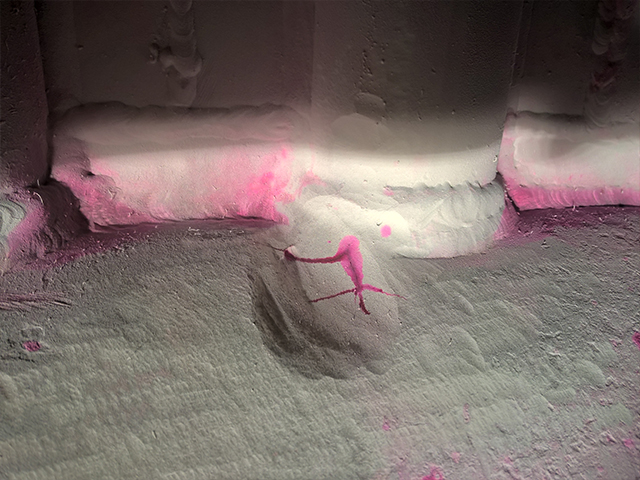
Liquid Penetrant Testing (PT) — Maximised Expertise and Experience
We have applied several testing methods in the almost 20 years of the existence of our company, thus our range of services include many non-destructive testing methods.
Our material testers have a high degree of competence and rely on appropriate technological background for conducting different inspections, including penetrant testing (PT), thus we have extensive experience in the field of non-destructive testing.
General Rules of Penetrant Testing (PT) and the Course of Inspection
Liquid penetrant testing (PT) is a non-destructive testing method, which is a valuable tool for detecting open-surface discontinuities, primarily cracks, overlaps, bonding flaws, and surface porosity.
It can be used to inspect metals, plastics, and ceramics, provided that the surface is not porous. There are two penetrant testing techniques: using fluorescent dye or non-fluorescent (visible) dye.
Penetrant testing (PT) is based upon capillary action by using different low surface tension fluids. First, penetrant is applied to the test component to be inspected. Irrespective of the force of gravity, the fluid penetrates into surface-breaking discontinuities and surface cracks owing to capillary action, then the excess penetrant is removed, and a high-porosity developer is applied. The applied developer absorbs the penetrant present in the cracks so that discontinuities become visible.
Factors Affecting the Effectiveness of Penetrant Testing (PT)
Particular care must be paid to the proper preparation and pre-cleaning of the surface to be tested in non-destructive inspections, including liquid penetrant testing (PT). In addition, several factors can affect the effectiveness and accuracy of penetrant testing, such as test time, including penetration dwell time and development time, test material, and the temperature of the test surface.
As regards penetrant testing (PT), it is important to point out that particular care must be paid to the penetrant and developer to be used, as some of them may be detrimental to the test material.
Our inspectors always use suitable penetrants thanks to their high-level professional competency; thus, our customers can be sure that all inspection is conducted in accordance with the highest standards and with maximum efficiency.

